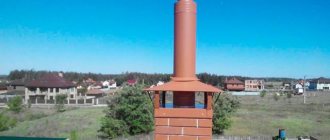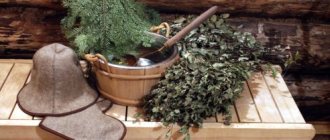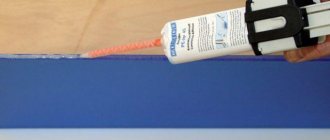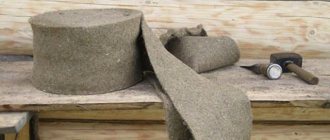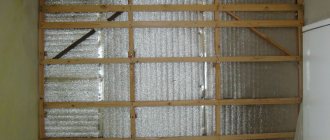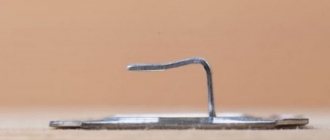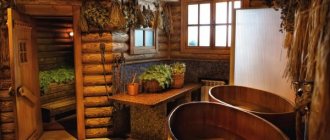There are a large number of insulation options on the market. Foamed polyethylene is the most commonly chosen material because it has impressive vapor, heat and sound insulation properties. The choice in today's market is truly great. The proposed options may have a self-adhesive surface, may be foil-coated on one side or both. There are such types of foamed polyethylene on sale as isolon, polyfom, penofol. The insulation can be attached to different materials. And depending on all its characteristics, glue is selected.
Use of Penofol
For such purposes, the material that is optimally suited is penofol, which has a layered structure and consists of aluminum foil supplemented with polyethylene foam. It is characterized by its low thickness and low weight, as well as ease of installation.
This material is used for finishing building structures, units of specialized machines and entire mechanisms, individual parts of technical equipment on a production scale, pipelines, air conditioning systems, drying cabinets, as well as inclined surfaces with a complex profile.
In order to ensure maximum steam, thermal, hydro and noise protection, Penofol must be glued to a previously prepared surface (cleaned and well-dried).
Before you begin gluing Penofol and the working surface, it is recommended that you read the instructions for the selected adhesive. However, there is one rule that applies to working with any adhesives, namely, all surfaces to be fastened must be clean and solid.
It is first necessary to eliminate existing chips and cracks, even the smallest irregularities, dirt, and blockages of various origins. If wooden, metal, or polymer surfaces require a primer, its chemical composition must be suitable for the selected type of adhesive. This is the only way to ensure maximum and strong adhesion of the fastening planes.
Selecting adhesive for Penofol
The modern construction market offers universal and special adhesives for Penofol, but all of them must correspond to the operating parameters of the material being described, namely:
- The temperature range of the glue must correspond to the performance characteristics of the insulation used.
- Persistent adhesive properties.
- Possibility of using a biologically non-toxic bonding composition when finishing indoor surfaces (residential, office).
Many conditions also depend on the target objectives. For example, when insulating external walls, the adhesive must be resistant to external factors - sudden temperature changes, snow and rain, direct sunlight, etc.
When working in baths or saunas, the adhesive must withstand sudden temperature changes and constant excess moisture.
If we are talking about insulating residential buildings and apartments, it is necessary to use polyurethane glue that is non-toxic and completely safe for the human body.
Types of glue
Since penofol is a fairly lightweight insulation material, the adhesive for attaching it does not pose great demands on strength.
- For exterior work, the range of operating temperatures is important, so it is best to choose mounting adhesive from the Moment Montazh Liquid Nails series. It is best to take “Super Strong Plus” glue, it is most resistant to temperature changes.
- For interior work, “Universal” or “Express” is suitable, as it dries quickly and can be used both outside and inside.
- Waterproof MV-40 is suitable for a bath or sauna.
- Weicon Easy-Mix PE-PP 45 adhesive is a specialized two-component adhesive based on methyl methacrylate, used for bonding PP polypropylene and PE polyethylene. The only drawback is the long hardening time (2-3 hours - preliminary, 1 day - full)
- For working with large quantities of penofol, PU-2 and PU-2A adhesives are suitable. They have good properties and are very durable, while being quite cheap. Unfortunately, these adhesives must be prepared on site: to do this, you need to mix polyester 24, technical acetone and polyisocyanate 102-T in equal parts. Portland cement is also added to PU-2 glue as a filler (0.25 parts).
- For small quantities, for example, when upholstering the inside of a car door or hood, it is better to use type C penofol with a self-adhesive layer. It is much more expensive, but it holds tightly and is absolutely harmless.
How to glue isolon to concrete
how to glue isolon to concrete
During the construction of industrial facilities and residential buildings, modern building materials are used to meet the most important construction requirements for heat and sound insulation. Such material, for example, is isolon or polyethylene foam. The use of isolon allows you to reduce construction time and heating costs due to the excellent thermal insulation properties of this material.
Isolon has the following characteristics: 1. Low density (light weight) and at the same time good thermal insulation properties. A 10 mm layer of isolon can replace a 15 mm layer of mineral wool, 45 mm of wood or 150 mm of brickwork.
This reduces the weight of structures and helps save usable space. 2. Freons and other substances hazardous to humans are not used in the production of isolon. Izolon is non-toxic, does not affect the skin, and does not emit harmful substances when used. Has a hygiene certificate, 3.
Isolon is a chemically inert material and is not affected by organic solvents. It is possible to combine isolon with other building materials (concrete, gypsum, cement, lime, wood). It practically does not absorb water and steam, therefore it is resistant to rotting, mold and aging, 4.
Excellent shock-absorbing properties due to flexibility and uniform cellular structure. Isolon is used as a backing for carpet, laminate, linoleum or parquet. Izolon sheets are used to separate adjacent walls if the adjacent walls are subject to movement or vibration, 5. The operating temperature range is from -60`C to +75`C, and if there are no mechanical loads, the operating temperature increases to +100`C. With the exception of special isolons with fire-extinguishing additives, isolon is a flammable material. But at temperatures less than +140`С no harmful substances are released from isolon, 6.
Izolon is produced in different thicknesses and densities (with different foaming coefficients) and is supplied in the form of rolls, sheets, tape or blocks. This significantly increases the possibilities of using isolon in construction. Depending on the production method, isolon is divided into cross-linked (when molecules are cross-linked, a network molecular model is formed) and non-cross-linked (there are no chemical bonds between the polymer molecules).
Cross-linked isolon, compared to non-cross-linked, has improved characteristics: 1. Heat resistance increases (the operating temperature range increases by 20°C), 2. The service life of the material increases due to increased resistance to ultraviolet radiation and organic solvents: oil, gasoline, diesel fuel, Izolon can be used 1.
For sound, steam, heat, waterproofing of walls, foundations, floors and roofs for country houses, cottages, garages, 2. As a sealant under slate, ribbed metal roofs or tiles, 3. Isolon tapes with an adhesive layer seal the joints of windows and doors, connections between the frame and glass, protect from dust, moisture and noise, 4. Izolon strips can be used to insulate cold and hot heating pipes, as well as ventilation pipes, 5. Izolon with a polymer metallized film is used as a heat-reflecting screen to protect against heat loss through the areas behind the radiators of the walls. When using a combined material, a double effect is obtained.
Due to the metallized film, up to 90% of the heat emitted by radiators or other heating devices is reflected back into the room. The big advantage of isolon is its ease of use and installation. It is easy to cut and can be glued to the surface with adhesives (pre-glued surfaces should be cleaned of dust and degreased).
To attach to a smooth surface, use screws, slats, and furniture staplers. To connect the joints, use a hair dryer. Isolon is attached to curved surfaces with double-sided mounting tape.
Thus, when using this modern material, it is possible to significantly reduce construction time and heating costs.
How to glue isolon to concrete
How to glue Izolon to concrete How to glue Izolon to concrete During the construction of industrial facilities and residential buildings to ensure the most important construction requirements for heat and sound insulation
Alternative bonding methods
As an alternative solution, you can offer products such as PVA, “liquid” nails and polyurethane foam. The first option may well replace specialized tools when it comes to gluing thin panels to a flat and adhesively favorable base in a room. Polyurethane foam will provide impeccable adhesion strength. If mechanical reliability is a top priority, then this option should be preferred. But you should also keep in mind that polyurethane foam will cause a lot of trouble if you need to dismantle the insulator. “Liquid” nails are also aimed at creating a strong bond, but this glue for gluing insulation can only be used outside residential premises. This is due precisely to the content of toxically harmful components.
Best answers
%username%:
Pat doesn't bother me at all, you have to come to terms with it
Roman Shved:
double-sided tape
Dmitry Dved:
There is a special adhesive foam like Penoplex in construction stores, but not Penoplex, it is specially made for this. The cylinders are red (more precisely the color cyan). I bought pistol cylinders with a capacity of 750-800g in Castorama. I don’t remember the name, it can be used as glue and foam. Dissolves with foam cleaner. The packaging indicates that before applying the foam it is worth spraying with water from a spray bottle. Water does not improve adhesion, but is a catalyst for hardening.
Vladimir Nikitin:
88 (such glue... ask the shoemakers)
Using dowels
In addition to adhesives, polystyrene foam boards can be fixed to a concrete base using dowels. This method can be used independently or as a complement to other methods.
Dowels for thermal insulation are made of plastic and vary in size. The higher the density of the base, the shorter the dowel will be needed. There is a metal nail inside it.
Advantages of using dowels:
- prevent slipping and deformation of the heat-insulating layer;
- provide a tighter fit of the foam to the base;
- completely eliminate the appearance of cold bridges;
- simple and convenient installation;
- low cost.
Limitations on the use of dowels:
- a metal nail can become a conductor of cold, reducing the thermal insulation properties of polystyrene foam;
- An additional tool (perforator) will be required for installation.
To attach polystyrene foam sheets, you will need 3 dowels per sheet. One of them is located in the center of the slab, and the other two are in its lower corners. Thus, the “umbrellas” of the dowels of the bottom row will hold the sheets of the top row.
A gap of 3 mm must be left between the sheets. This seam allows the slabs to expand during fluctuations in temperature and humidity, eliminating their deformation. The seam is filled with sealant.
Several types of adhesives can be used to bond polystyrene foam to a concrete surface. The installation method is selected based on the quality of the base and available resources. The choice of means for fixing sheets is a determining criterion for the service life of the concrete surface, as well as ensuring the level of heat and sound insulation.
Life time
Since foil insulation appeared relatively recently, it is not yet possible to determine the exact expiration date. However, after conducting experiments, we can say that the material does not lose its properties for 200 years.
The service life of the installed insulation depends on the adhesive used. If the adhesive composition has passed its expiration date, then you can re-install it with the same heat insulator.
There are a lot of insulation materials on the construction market. The choice is so wide that the question arises, which is better. To answer, you need to compare the characteristics of the thermal insulation material and the scope of application - street, living room, garage or agricultural building.
Plaster and adhesive mixtures
Such mixtures are suitable for gluing EPS to plasterboard, brick, concrete, and cinder block bases. You need to breed them yourself, since they are sold in the form of dry mass. The composition includes mineral components, plasticizers, Portland cement, and a number of auxiliary additives. The mixtures are suitable for exterior work and interior decoration; they will hide all the unevenness of the base. The downside is the need for preliminary deep priming of the surface.
Ceresit CT-83
"Ceresit ST-83" is widely used for pasting building facades. It has excellent frost resistance and adheres well to wood, concrete, plaster, and brick. After drying, ST-83 is breathable. Consumption per 1 sq. m is small, because it is enough to apply the mass 1 cm thick (this is done with a notched trowel).
The company also produces high-quality adhesive Ceresit CT 85, which is considered universal. High strength and ductility are due to the polymers included in the composition. But this product costs an order of magnitude more than the previous one, so builders prefer ST-83. Both materials are applied in intermittent stripes, slightly retreating from the edge for better air release.
Bergauf ISOFIX
Bergauf Isofix glue is a mixture of minerals, fillers, cement, sand, plasticizers, and special additives. Can be used for any indoor and outdoor use. Average consumption – up to 5.5 kg/sq.m. m, a thin layer (3 mm) is required. After dilution, the mixture is viable for 1.5 hours, it is possible to change the position of the plate on the wall within 25 minutes. The glue is sold in 25 kg bags and can glue extruded polystyrene foam to all types of surfaces.
The most popular type of insulation with foil for finishing the inside of aluform
Bestizol or alufom is a bubble base consisting of aluminum foil (outer layer) and polyethylene (inner layer) on one side. The foil acts as a reflector of solar and heat rays. The polyethylene layer has a cellular structure and neutralizes sound waves and shocks. The advantage of this material is low thermal conductivity.
Bestizol can be used in both cold and hot weather. Due to its small thickness (1 cm), the material is used for hard-to-reach places:
- for winding ventilation pipes;
- air duct coverings;
- insulation of pipelines and other outlet communications.
Using special glue
When choosing an adhesive composition for penofol, you should take into account the type of surface to which it will be attached. The foil coating does not allow drafts or heat to pass through. To save heat energy in the building, penofol is attached to the insulation from the inside. The air space should be 1 cm. Penofol must be fixed with an air gap.
Foam plastic 5-10 cm wide is used as insulation. The sheets must be glued tightly to a special adhesive composition suitable for the foam. Plastic umbrellas provide additional support. A mesh is attached to the top.
PVC film soldering technology
When consulting beginners, specialists pay attention to two points, without which it is extremely difficult to achieve a positive result; the situation is like this:
- At the first stage, you need to thoroughly clean the soldering area and degrease the surfaces so that the canvas does not stick to the ink.
- When connecting, ensure reliable fixation of the material until complete hardening.
The resulting microscopic holes after making the main connection are simply covered with high-quality sealants; it is important to avoid the appearance of folds, such excesses are difficult to eliminate.
This method has become popular when creating three-dimensional banners; it is easy to make 20 by 30 meter specimens from several blanks, and craftsmen also use polyethylene glue to create reservoirs of up to 500 cubic meters.
Application
Penofol is foamed polyethylene, covered on one or both sides with aluminum food foil. The thickness of the finished insulation does not exceed 10 millimeters. The popularity of penofol as a building material is explained by its properties: it does not absorb thermal energy accumulated in the room, but reflects it. The purpose of this material is to retain warm air in winter and cool air accumulated in the room during morning ventilation in summer.
Insulation
Penofol can be used in other cases, for example, for insulation:
- piping systems;
- premises from external noise;
- hydro and steam systems;
- ventilation shafts.
It is also often used as a reflector of the thermal energy of a heating radiator, as an attribute for the artistic decoration of ceiling, floor or wall surfaces.
Epoxy adhesive is not intended for gluing polyethylene surfaces, but the phenol-formaldehyde resin included in its composition has excellent adhesion to such material.
Application of epoxy glue:
Rub the areas to be glued with sandpaper, degrease and dry. Treat the surfaces with chromic anhydride (concentration solution 15-20%) or potassium dichromate (20-30%)
You need to work with them with extreme caution, as these substances are very caustic and are dangerous carcinogens. After treatment, dry the surfaces. Prepare epoxy glue according to the instructions on the package. Apply a thin layer of adhesive to both surfaces and immediately join them. Leave for several hours, or better yet, a whole day at a temperature of 30 to 45˚ C, so that the seam completely hardens.
Foil insulation for walls and floors
Foil insulation has relatively recently appeared on the construction market, but is rapidly gaining popularity for various reasons. Next, we will consider the types of this material, the advantages in comparison with traditional insulation and how to use it correctly.
What is rolled foil insulation
This is a combined material for insulating walls, floors and ceilings, consisting of several layers:
- Insulation made from familiar materials.
- A layer of foil.
The material is rolled, therefore it has a relatively small sheet thickness. How does heat retention occur?
- A thin working layer delays the penetration of cold air from outside,
- The foil reflects heated air into the room.
Varieties
Roll insulation materials are classified according to the main material:
- Foamed polyethylene with foil that can be attached on one or both sides.
- Folgoizol is created on the basis of bitumen/rubber, mineral fillers and antiseptic.
- Mineral wool rolls with one-sided foil surface.
- Basalt lamella insulation,
- Expanded polystyrene boards with one aluminum surface.
Each of the presented materials is intended for use in certain conditions.
Application
Penefol (closed cell polyethylene foam) is versatile in use. They insulate walls and floors in residential premises.
Foil insulation for pipes and roofing - foil insulation. It is also used in the construction of industrial facilities.
Rolls of mineral wool with an aluminum layer are used in the same way as conventional insulating mats: for insulating walls, floors and other structures. The difference between foil-coated mineral wool and regular wool is the built-in waterproofing; aluminum does not allow moisture to pass into the fibers, preventing the material from getting wet.
The ideal insulation foil for a bathhouse is based on basalt: it has a low heat transfer coefficient, is not afraid of humidity and large temperature changes. As you know, stone wool is a hard material. To roll it into a roll, the basalt is sawed into lamellas, which are laid on an aluminum base. This insulation is used to insulate various social and industrial facilities.
Foiled polystyrene foam is used for floor insulation.
All materials with a layer of aluminum foil have higher technical performance than their traditional form. The cost of foil insulation is an order of magnitude higher than the cost of conventional material; this is the main disadvantage of the “advanced” sample.
The first and most important question is which side to put the foil insulation on?
The first rule of installation: the reflective side should be directed towards the room. This will ensure natural heat reflection.
The structure of insulation and finishing must be thought out: in the case of walls, there must be an air gap between the insulation and subsequent finishing. When using a mineral wool base, it is necessary to insulate the material from the penetration of water; for this, a membrane is attached to the base, allowing steam to pass out.
How to attach foil insulation to a wall: roll out the insulator over the fixed membrane and fix it with guide rails, the thickness of which should exceed the thickness of the main insulation. The layers are connected with staples along the edges of the slats. Subsequent finishing of panels or lining is carried out along guides, which provide an air gap with their thickness.
Some craftsmen recommend protecting the foil with vapor-proof films to prevent moisture from entering the body of the mineral wool layer through possible holes in the metal.
For wooden and concrete floors, the algorithm of actions remains identical:
- The base is cleaned of old coatings, and debris is carefully swept away.
- Prime the subfloor with a concrete or wood primer.
- After the primer has dried, measure out the required amount of roll insulation and roll it out. It is optimal to use adhesive-based material. The strips are laid with an overlap of 10 cm, the joints are taped with aluminum tape.
- The finishing coating is laid on top.
If the room has an electric or water “warm” floor, the rolls are rolled out with the reflective side up, a reinforcing mesh is laid on top, then heating elements and a cement screed is produced followed by cladding.
Foil insulation for walls and floors
Let's look at the types of foil insulation, its advantages over traditional insulation, and how to use it correctly.
types, characteristics, pros and cons (photo, video)
Every year, a lot of new materials appear on the market that can provide the user with maximum performance in technical and operational terms. Isolon is one of the most versatile modern materials that are used as thermal insulation for balconies and other premises. In the article we will explain in more detail why isolon is needed and what its technical characteristics are.
Types of material
At its core, this material is polyethylene foam. Unlike standard polyethylene foams, isolon is elastic and also has a cellular structure.
The material can have different densities and thicknesses, which indicates the versatility of isolon.
The manufacturing technology is very complex, as it involves careful processing of the original raw materials.
Currently, there are different types of isolon;
- isolon PPE;
- isolon NPE.
The first type is cross-linked polyethylene foam with a transverse structure. But NPE is extruded polyethylene foam, whose structure is not cross-linked. Both species are different from each other at the molecular level, but they are also quite similar in appearance. These are the two main categories of isolon, but there are several other types.
At the top is the structure of uncrosslinked polyethylene foam, at the bottom is crosslinked.
Characteristics
We decided to present the main technical characteristics of each option in the form of a table to clearly demonstrate the differences.
IndicatorIzolon PPEIzolon NPE
| Apparent density | 33 kg/m 3 | 24-45 kg/m 3 |
| Use temperature | -60 C to +75 C | -80 C to +80 C |
| Thermal conductivity | 66 W/m*K | 0.040 W/m*K |
| Water absorption | 0.01 | 0.01 |
| Vapor permeability | 0.001 mg/(m*h*Pa) | 0.001 mg/(m*h*Pa) |
| Sound absorption | Up to 60% at 6000 Hz | 3 – 13% |
If you are interested in whether this material burns or not, then it is advisable to check with specialists when purchasing this or that type. The degree of combustion will be different, for example, for isoplene and teploizolon. The same applies to other types of material.
Foamed polyethylene: material features
This material can also be found under another name. For example: polyfol, isolon, etc. But they all characterize one substrate. It differs from others in its low thermal conductivity, since the structure is porous and light. At the same time, it can be used in rooms with temperature changes. Tolerates heat well.
Such material can replace a wall that is laid out in half brick. It goes well with materials whose thermal insulation properties are of poor quality. This substrate can be laid on a concrete wall. As you know, it freezes very well at low temperatures. As a result, its thermal insulation properties will improve significantly. This way, living conditions in the apartment will be as comfortable as possible.
Device, circuit, principle of operation
An effective sewerage ventilation system in a private house consists of two key blocks:
- A ventilation duct from a cesspool or septic tank.
- Fan pipe in the house.
The principle of operation of ventilation with a cesspool:
- the pipe above the cesspool works as a supply system, air is drawn through it into the sewer system;
- through the drain pipe of the house, the unpleasant odor is released into the air space above the roof;
- when draining waste, excess air masses with an unpleasant odor are discharged through a pipe above the pit;
- the vacuum is filled by the exhaust pipe.
For such an autonomous system to work, it is important that the cesspool does not overflow and the ventilation pipe does not block the drains. The channel above the septic tank and the drain pipe must not be allowed to become clogged. For preventive purposes, the system should be equipped with inspection compartments and inspection pits.
They will help remove blockages, carry out repairs and restore ventilation if necessary.
For preventive purposes, the system should be equipped with inspection compartments and inspection pits. They will help remove blockages, carry out repairs and restore ventilation if necessary.
Many people associate an outdoor toilet in a country house with an unpleasant odor, dirt and danger. But modern summer residents strive to make such a toilet the most comfortable and safe place possible.
The design is a small cubicle, wooden or brick, with a toilet or seat located inside. There is a cesspool under the cabin, and it is this, or rather the accumulation of waste in it, that causes the unpleasant odor. During the process of decomposition, human waste releases a foul-smelling gas - methane, which, moreover, is also dangerous to health - a person can lose consciousness when visiting the toilet.
Methane vapor penetrates the wood and destroys it, as a result the wooden floors deteriorate and there is a risk of the structure collapsing. Hence the conclusion: it is necessary to prevent the accumulation of gases and ensure their free release. This is why ventilation is needed in an outdoor toilet.
Application area
Polystyrene foam is used in various spheres of life. A large number of materials and products are made from it. The material also retains heat well, so it is often used to insulate walls.
Areas of application of expanded polystyrene:
- Construction works. In construction, it is used for thermal insulation of structures, houses, buildings, garages, hangars. It is also used for external insulation.
- In shipbuilding. Lifebelts, lifeboats, and light boats are made from it. Also used to fill the compartments of small boats.
- In medicine. In this area, foam containers are used to transport organs and medicines.
- In furniture production. It is added to the composition of the material from which various pieces of furniture are then made.
- For the production of packaging materials. Added to various bags, packaging, wrappers, and so on.
- For the production of outdoor advertising. It is added to advertising structures - banners, signs.
- In clothing production. It is added to many fabrics. Clothes containing foam are very warm.
Which method is better?
Polyethylene molecules do not have a high electrical potential, so finding a substance that will stick well to the polymer is very difficult. Not only chemical compounds are used for joining; depending on the type and purpose of the structures, other methods can be used.
Craftsmen have found several ways to create a strong connection.
- Welding is used when gluing 2 polymer structures, especially for foamed polyethylene.
- Double-sided tape will help to fasten the plastic film together or attach it to structures made of some other materials, but such a connection cannot withstand heavy loads.
- Special glue.
In stores you can see a lot of ready-made materials, the packaging of which says that they are suitable for gluing polyethylene
Please note that the composition must include methyl acrylate
This component softens the polymer, which is especially important when working with thick films. It may also contain xylene and chromic anhydride.
It is convenient to work with this glue, it is ready for use and does not require additional surface treatment. The only negative is that the vapors are very toxic; you need to work with good ventilation or a respirator.
The composition may also include xylene and chromic anhydride. It is convenient to work with this glue, it is ready for use and does not require additional surface treatment. The only negative is that the vapors are very toxic; you need to work with good ventilation or a respirator.
There are preparations in the form of a thick paste, which must first be mixed with the solvent included in the kit. It is more difficult to use such glue; the working solution dries very quickly. If you do not have experience, prepare the glue in small portions. Epoxy resin has similar qualities, which can be used for gluing foam and ordinary polyethylene.
Open flame welding of film
At the stage of choosing what to glue polyethylene with, many owners of private houses decide to use available means, such as:
- Gas-burner.
- Alcohol lamp.
- Blowtorch.
- Special cans with a nozzle.
- Paraffin candle.
When preparing the site for the process, several bars of metal or ceramic are installed; these structural details will help create, using the fixation method, perfectly smooth edges along which the master will pass with an open flame.
It is enough to allocate a few millimeters of material for soldering; taking wood or other flammable objects is not recommended. After a person runs the selected device along the edge for connection, the two segments become one whole canvas by melting, it is important to correctly select the speed of moving the nozzle along the plane in order to heat it well and not burn the material, which is often determined visually.
Glue selection
The range of adhesives for penofol on the modern market is quite wide
Therefore, it is important to take into account the different characteristics of materials
General rules
Penofol adhesive is selected based on the following:
- the product has durable adhesive properties;
- the thermal range coincides with the temperature characteristics of the insulation;
- a non-toxic certified product is used in the interior decoration of residential premises (apartment, office);
- for external finishing, you need glue that is resistant to temperature changes and weather conditions;
- saunas and baths require mixtures with water-repellent properties;
A water base will not create the required level of penetration into all the pores of foil polyethylene foam. The grip on the surface will be insufficient.
Choose what to glue with, also evaluating the surface:
- Weicon Easy-Mix PE-PP 45. Bonds polypropylene and polyethylene. It hardens for a long time;
- Titanium. Optimal for concrete base;
- Atlas Stopter K-20 glue. Adheres to mineral substrates;
- T-Avangard-K is used at high humidity;
- Contact Acrol or Neoprene-2136 spray is glued to penoplex;
- Ceresit and Olfix are universal - they are attached to any surface, including concrete;
The seams are treated with Tilite or special tape.
Answers from experts
Grandfather Au:
ordinary food will not work - it is metal and if it can “reflect” some part of the radiation, then part of the convective flow will still heat it up, and since aluminum is an excellent conductor... Insulation is needed under the foil! The walls need to be insulated themselves, for example .termoplex /korund.php?table=korund
*:
Try to stick it with drool...
Marek Black:
You'd be better off insulating it with polystyrene foam from the outside. and the floor can be insulated. You talk to those who do this.
Evil Electrician:
I think you need to consult a construction store at the store or try installation
New:
First, prime it several times with bentonite, and then glue, but it’s better with a heat-insulating layer, even PVA, but there are some that are sold as self-adhesive on a heat-insulating backing.
Sergey Burmasov:
think about it, maybe galvanized iron, or better yet stainless steel, because foil is weak
Nina Ilyina:
oh, if the sticker is crooked, get a magnifying glass, with a focus like in ancient Greece they burned the fleet)
Albert Belkov:
I use Termoizol - foil on foam, it’s easy to work with: I insulate steel baths - they turn out no worse than cast iron ones, they are warm. And food grade can be glued onto cardboard with slots for hooks for easy insertion.
Yuri Martysyuk:
Buy penofol, they are sold in different thicknesses. It can be self-adhesive, but if not, try double-sided tape!
Chuck Kazemierczak:
If the foil is glued to the glass with egg yolk, then it will definitely stick to the concrete
Dmitry Nizyaev:
Double-sided tape. He then o? It will hold, but nothing more is required.
egor ag:
Why insulate at all? I've never done this. Insulation only retains heat, but does not generate it. And no insulation will keep the engine warm overnight. Moreover, the hood is not even the surface of the engine itself.
Doctor:
Bolts or rivets
Pavel Voronin:
why attach it at all, just put it in when you need to twist it and put it away
zheka-zloy:
narrow stripes and reinforced adhesive tape around the perimeter, see all this is fair... and the discarded material is used as a reflector for radiators in apartments (it is believed that it increases efficiency when heating in winter)))
kurt:
called FOLGOIZOL
Engineer:
If it’s more durable, then formos /produkciya/klej_adgezivy/klej_sprei-3m/80-scotch-weld/If you stick it and unstick it, then lenta-plus m/catalog/kley/49
kenny unknown:
The material is penofol, the trouble is that it will definitely melt in the collector area. It is glued with liquid nails from the installation company for products made of PVC and polystyrene.
How to choose the right living room
Before you start purchasing the contents of the room (furniture), it is important to carefully plan the entire interior in the smallest detail. This process takes a lot of time and effort, especially for non-professionals, so to get rid of the hassle, it is better to contact a design company.
The first stage of planning will be to determine the functionality of the room. To do this, you need to draw on paper a detailed plan of the room, taking into account all window and door openings, niches, bay windows and similar elements. Then determine the purpose of the living room: will it be just a relaxation area, a study or a room for holding parties.
The filling of the room directly depends on this point, for example, for an office you will need a computer desk or a multifunctional bureau, a comfortable chair and several shelves for books and documents. Zoning of space is also quite popular in the design of the living room.
Most often, this technique is carried out by contrasting painting the walls in colors that are radically different from each other, or by light separation. It is worth noting that this technique is often used in the design of small spaces.
Characteristics of reinforced film for greenhouses
The indicators of the material are most often paid attention to by owners of country houses who want to purchase film and not be upset about the service life; how long the greenhouse will last directly depends on the choice of canvas. Experts advise looking at the following characteristics:
- Roll length.
- Width.
- Density per 1 cubic meter cm.
- Color design.
The polymer material must transmit at least 75% of sunlight so that the gardener can save on additional lighting. In bad weather, the frame can remain undamaged only if you buy the most durable film samples, and over time, the destructive effects of the environment will not affect the integrity of the canvas.
